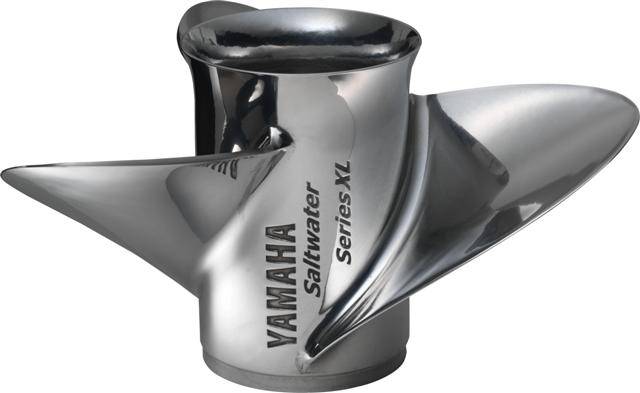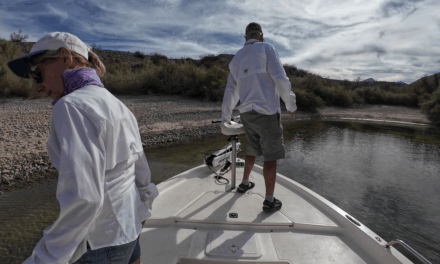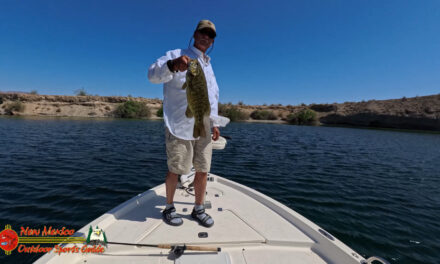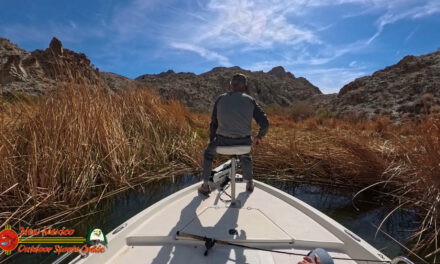Lake Mojave is an incongruity – blue, sparkling water in one of the driest regions of the continent. The waters of the Colorado derive from rain and snow melt in the high mountains of Wyoming, Utah, and Colorado. The river works its way through the canyon lands and finally reaches the sere, brown treeless landscape of Arizona and Nevada. The drought lands of these two states, even before human water withdrawals, demand more water from the river than they give – the evaporation off Lake Mead is greater than Nevada’s total legal water allotment. And yet we go boating on clear, blue shimmering water in the middle of the Great American Desert.
And that’s only one of the contrasts that make Lake Mojave such a joy for cruising. Here one can spy a mountain lion or a bighorn sheep in the wild wilderness of deep canyons and dry washes during the day, and sit at a casino buffet in Laughlin for dinner. Should you opt for wilderness and swing on a hook in a lonely cove amidst the wild, avoiding those beckoning tables and piles of food, you still can’t get away – the bright lights of Las Vegas create a glow to the north, and a similar shine brightens the night sky to the south over Laughlin.
Why, even the name is a contrast. The Spaniards called the desert area Mojave, the natives call it Mojave, even some towns are named Mojave – but the National Park Service calls the lake – Mohave. Now, it would be nice to blame the misspelling on the inability of eastern politicos who can’t pronounce Spanish, but they aren’t to blame. Nevada’s own senator, Sen. Bible, named the lake, Mohave, in the enabling legislation for the expansion of the Lake Mead National Recreation area. He knew it was Mojave, but apparently thought it would be easier to give the name a phonetic pronunciation after hearing those eastern dudes mispronounce Mojave. Nevadans are a stubborn breed, though, without much respect for those in Washington, DC, so most still write the name Mojave (just as we still call Boulder Dam, Boulder Dam – not the name of some politician, Hoover).
Another important incongruity for boaters on Lake Mojave is the amazing geologic contrast. As you cruise upriver from Davis Dam, you pass next to a high mountain mass, the mountain sacred to natives, Spirit Mountain. It is the spire crowning the Newberry Mountains, a huge mass of light-colored rocks, deeply incised by canyons (that make marvelous anchorages). Farther north, the lake spreads out into a broad basin edged by sloping gravel. Then, above Cottonwood Landing, you cruise into the depths of a beautiful, rugged canyon. Rock walls tower above the water and you enter a glory of sheer rock and steep side-canyons. Geologists have been scrambling over those rocks scratching their heads for a hundred years – some searching for mineral wealth (and finding it) and others trying to decipher the clues left behind in the rock.
The colorful rocks that make the setting of Lake Mojave contain fragments of geologic history that date back over two billion years; nearly half of the Earth’s almost 5 billion-year history. There are amazing tales of continental collision, crustal stretching and rupturing, volcanic eruptions, and carving of the land by water.








